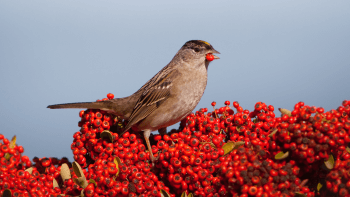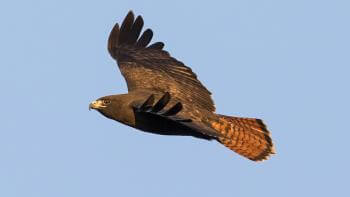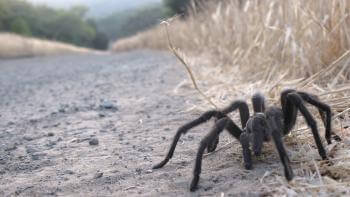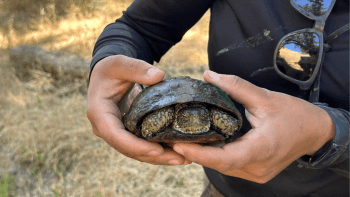Tracking Tule
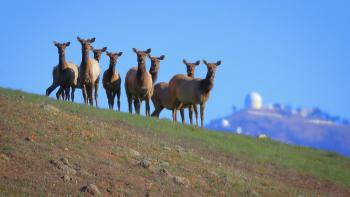
It's estimated that approximately 5,700 tule elk are living in herds throughout California, including populations that roam the open spaces of the Diablo Mountain Range. Averaging 7 feet in length and weighing between 400 and 800 lbs, these large animals need space to roam as they seek food, water, and shelter to survive and rear their young. Over the years, many questions about the movement and health of tule elk populations have gone unanswered. Now, thanks to a new research initiative involving Global Positioning Systems (GPS) collars, scientists may soon unlock the mysteries surrounding the secret lives of tule elk herds in the Santa Clara Valley - including places like Máyyan ‘Ooyákma – Coyote Ridge Open Space Preserve.
Terris Kasteen, an environmental scientist and Wildlife Biologist for the California Department of Fish and Wildlife, started managing ecological reserves in Santa Cruz and Santa Clara Counties in 2012. “Last year we did a deer study on Open Space Authority properties and we’re looking at deer populations right now.” Next, her team will turn their attention to tule elk – specifically collaring elk in Alameda and Santa Clara Counties.
“This is my first big collaring project which is exciting but takes a ton of time. It’s exciting to think we may get answers to some of the outstanding questions we’ve had for so long."
The focus of their research will look at the survival rates of calves and adults, but the calves are especially important because that’s what drives the size of the population.
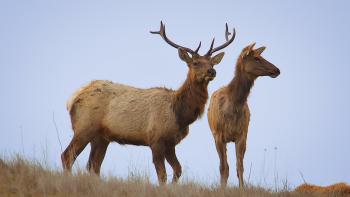
At the San Antonio Valley Ecological Preserve, 2,800 acres, just east of Mount Hamilton, tule elk come and go. “When I first started, I saw 80 elk all at once,” Kasteen exclaims. “But I never saw that many again. For the last 10 years or so, the herd population has gone down to about 40-60 individuals. So, we’ve wondered, why is the herd not expanding?”
Until now, studies of the tule elk herds at the San Antonio Valley Ecological Preserve were anecdotal, involving aerial surveys of the elk every three years – essentially giving scientists a one-day snapshot. “We haven’t done collaring for them until now,” Kasteen notes. With a stagnant population, she ponders the conditions of recent years, suspecting that lack of nutrition and the long drought are likely suspects. But the other question is their movement. “Where are they going?”
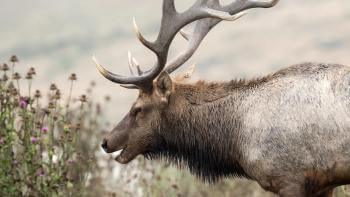
Over the years, ranchers claim to see bulls (male elk) moving through the thick chaparral of Mount Hamilton, but Kasteen notes “there’s no data to back that up.” Meanwhile, a herd of elk moving between Anderson Lake in Morgan Hill and Máyyan ‘Ooyákma – Coyote Ridge Open Space Preserve seem to be growing. For geographic reference, Coyote Ridge is in southern Santa Clara County, just 15 miles from downtown San José, where the Open Space Authority has protected over 1,800 acres of serpentine grasslands that are co-managed by the Santa Clara Valley Habitat Agency. Across this area, over 100 were counted in 2019, a much bigger population than was thought to live on the east side of the range.
This left Kasteen wondering: are these elk moving over the mountain, or are the ecological conditions at Anderson Lake better, allowing them to stay there and thrive? Pockets of suitable habitat are intertwined with fragmentation from degraded lands, development, or other threats like invasive noxious weeds like star thistle. Kasteen reflects on another recent elk collaring project at the San Luis reservoir. “One of the bulls moved all the way from the reservoir to Coyote Valley,” a journey which is about 30 miles long.
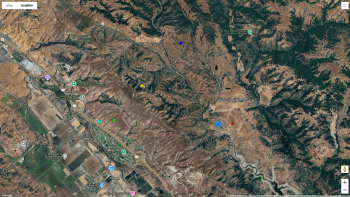
In January 2025, Kasteen’s team visited Máyyan ‘Ooyákma – Coyote Ridge Open Space Preserve to collar tule elk in the region. The team consisted of a pilot and four wildlife “muggers” who have extensive experience in safe techniques for wildlife capture that prioritize the health and wellbeing of the animal. Together, they flew over the preserve in a helicopter to find the herds and collar them. Additional crew members were stationed at a nearby basecamp and provided ground support, advised the helicopter crew on how to best place collars throughout all sub herds, prepped collars, processed blood samples and coordinated with multiple landowners that allowed access for capture.
Over a two-day period, the team collared 25 tule elk, both within the preserve and the surrounding areas. From the helicopter, the wildlife muggers spotted the elk and released net guns to catch the elk in a swift manner. Once the elk were captured, the wildlife muggers collared them and drew blood samples as quickly and humanely as possible. Once this 10-to-15-minute process was complete, the wildlife muggers immediately released the tule elk back into their habitat.
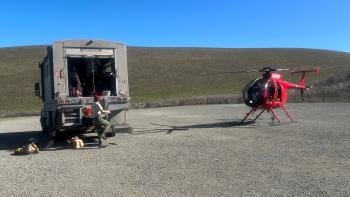
The collars have a battery life of three years and track the movements of the elk. Over this time period, the California Department of Fish & Wildlife staff will continue to monitor collared elk, both from the ground and from a fixed winged airplane, to collect data on the population size of all herds within the region, including birth and survivorship rates. The blood samples drawn at the time of collaring will be used to determine if the elk have any nutrient deficiencies and diseases that can be mitigated through habitat improvement and expansion.
Since the collaring took place, Kasteen has already made various observations about the tule elk. A herd near Anderson Lake, located just south of Máyyan ‘Ooyákma – Coyote Ridge Open Space Preserve, remained close to one another. Meanwhile, a lone elk seems to have claimed an area north of Metcalf Road and hasn’t moved much since Kasteen and her team began tracking its movements. In total, nine tule elk who were found within the open space preserve are now collared, and with this progress the Open Space Authority hopes to better understand how this unique species moves throughout the land and if there are any land management adjustments the agency can make to provide greater protection for this population.
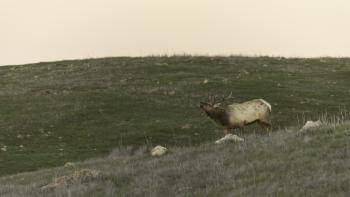
Kasteen and her team are excited about the prospect of collecting new data over the next few years that will help everyone better understand the migration patterns, living conditions and population fluctuations among tule elk in the region. The collaborative efforts between the California Department of Fish and Wildlife, the Open Space Authority and Valley Habitat Agency is essential to the conservation and protection of these majestic elk, and the landscapes they depend upon.
